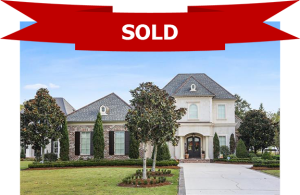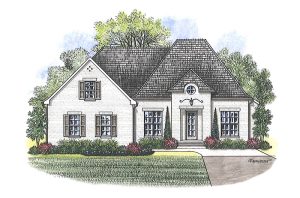2021 New American Home Has 4 Green Strategies To Follow
 The New American Home 2021 is located in Winter Park, Florida and is the official show home of the NAHB International Builders’ Show® (IBS). The home conveniently located in the downtown area close to restaurants, shops, and parks.
The New American Home 2021 is located in Winter Park, Florida and is the official show home of the NAHB International Builders’ Show® (IBS). The home conveniently located in the downtown area close to restaurants, shops, and parks.
This single-family three-story home incorporates innovative technology and current trends in a high-end, sophisticated setting. The design and construction of the home follows the National Green Building Standard “Emerald” certification, Energy Star, and net-zero status.
“Building green does not need to be more difficult or extremely costly,” said Drew Smith, NGBS Green Master Verifier of Two Trails, Inc. who oversaw the NGBS Green Emerald Level certification for both homes. “Finding what makes sense for you and your clients is the best way to deliver a high-performance certified project.”
This home features four high-performance strategies that can be added to any new construction or renovation.
1. Tight Thermal Envelope
This will basically reduce hot or cold air from seeping in from the exterior walls of your home. By doing this, you will lower utility bills and make your living space more comfortable. The thermal envelope of your home includes wall and roof assemblies, insulation, air/vapor retarders, windows, and weatherstripping and caulking. Make sure to use a higher insulation value in the walls and attic spaces of your home. Use windows that have Low-E coating that will reduce the amount of solar heat that comes in through the windows and are filled with argon gas which keeps airtightness. Exterior concrete masonry unit (CMU) walls filled with corefill foam/reflective insulation are a good way to keep a layer in between the inside of your home and the outdoor elements.
2. Indoor Air Quality (IAQ) and Comfort
This is the air quality that is in your home as it relates to the health and comfort of those living in the home. An indoor space must have fresh air exchange and proper ventilation. Pollutants found in your home range from oil, gas, kerosene, coal, wood, tobacco products, building materials (damp carpet or pressed wood), household cleaners, HVAC, radon, pesticides and outdoor air pollution. The home should be able to have proper ventilation along with the ability to maintain relative humidity. A good way to do this is by using bath fans and kitchen range hoods. For the HVAC system use MERV 13 space conditioning air filters. When painting or caulking in the home use Low/no volatile organic compounds (VOCs). Furniture, appliances and building materials should be composed of healthy, eco-friendly finishes.
3. Above-Code Energy Efficiency
The U.S. Department of Energy has energy codes that builders must follow. These codes establish minimum energy efficiency requirements for new construction and renovations. New homes built above the standard code can reduce energy consumption by 40% and will not have much higher construction costs. When building a new home or renovating use a tight envelope, correct sized HVAC-R systems for your home, 100% LED lighting exterior/interior, ENERGY STAR appliances and smart home technology for lighting control and climate control.
4. Above-Code Water Efficiency
Water efficiency is based on how we use our water resources. The goal is to reduce our use through water-saving technologies. Simple steps such as fixture choices, plumbing layout design, landscape design, and smart (or no) irrigation can help achieve water efficiency. Choose EPA WaterSense® labeled plumbing fixtures. When it comes to hot water, use a tankless water heater with insulated water lines and on-demand hot water recirculating pumps. For landscaping use Indigenous landscaping with a minimum of turfgrass and for irrigation use micro-spray, driplines and programmable controllers.
These are just a few steps that you can take to make your home greener. A green home will be a more comfortable and healthy environment to live in as well as a money saver on utilities.



 The total private residential construction spending is 21% higher than reported a year ago. The
The total private residential construction spending is 21% higher than reported a year ago. The 